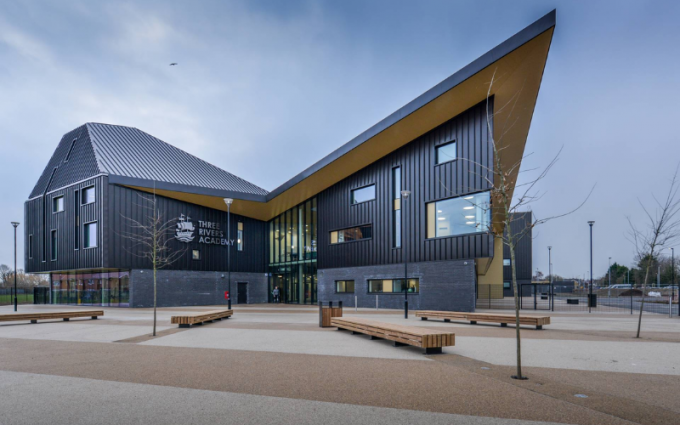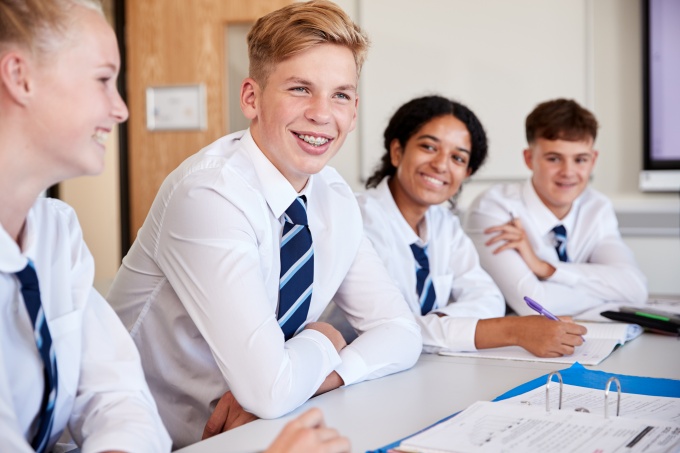By Daisy Bailey, Headteacher of Manor Field Primary School, in West Sussex.
Why did you decide to introduce the Thrive Approach?
Our vision statement is ‘all pupils become socially and emotionally intelligent, as well as academically, so they can access all learning and life opportunities, now and in the future’. The Thrive Approach was introduced as a whole school initiative to address significant behavioural issues across the school, which also included behaviour between staff and parents as well as pupils.
Before investing in the Thrive Approach, our Chair of Governors, myself and our Deputy Headteacher attended a Thrive overview session at another local school. After presenting the need to have a whole school approach to address issues with the school culture, the Governors agreed to invest in Thrive. A significant part of our Pupil Premium funding is used to continually train staff and to invest in resources to support pupils in line with our Thrive activities.
How did you go about doing this?
Introducing the Thrive Approach became the focus of our school development plans three years ago, starting with multiple inset training days, termly staff training using the Thrive Together modules, training seven Thrive Licensed Practitioners and, most recently, Family Thrive sessions to support our parents and carers. The positive impact of the Thrive Approach was captured during a recent Ofsted monitoring visit:
‘Your approach to improving behaviour across the school is proving transformative. Incidents of poor behaviour have dropped significantly over the last three years. Everyone now understands the rules, and staff support pupils well to help them thrive, whatever their difficulties may be.’ Ofsted report February 13 2020.
The most recent interim Ofsted inspection, noted that the impact of Thrive could be felt across the school and is at the heart of our vision and ethos.
What does Thrive look like in the school?
We now have seven Thrive Licensed Practitioners across all key stages, one of whom has attended Family Thrive training and has delivered one full programme. The feedback from parents was very positive about this course:
One said: “Today I finished my Thrive course. So informative, so many clever skills learnt and heart-warming ways of bringing the family back together when everyone is fed up/at each other's throats!! It helped me to understand the development of children's minds and how to respond in certain situations. Seriously worth every minute. It also confirmed that we are doing alright and are never alone when things get tough.”
Two Thrive rooms have been created at Manor Field. These are large rooms which have been refurbished in calm neutral colours, with comfy seating, tents and resources suggested from Thrive documents. Children enjoy their Thrive sessions and the impact is measured on a whole class and individual pupil basis by using the Thrive-Online™ (TOL) profiling and monitoring software.
Our Inclusion Pastoral Leader has overall responsibility to monitor the work of the class teachers and Thrive Licensed Practitioners. There is a Thrive tab on the school website which is continually updated with Thrive news and evidence of Thrive activities taking place. During the last lockdown, the suggested Thrive activities were posted on the website and parents shared photographs and comments.
One example of this feedback is: “C has spent the whole morning doing the Thrive activities - doodles, tree house meditation and now cosmic kids yoga. Much needed for us all, thanks.”
Teachers complete class profiles and activities are taken from the resulting class plan, which are delivered every other week. Teachers are then able to demonstrate and share the progress with Senior Leaders and pupils. Individual pupil plans are developed by our Thrive Licensed Practitioners for children who have been identified as having a need for Thrive. These children are identified through knowledge from staff and parents. Three plans are created for the class teacher, the practitioner and for parents. We use this data to measure progress between parents’ evening and meetings with outside agencies.
We have a number of children who struggle to come into school in the morning so we have made good use of our Thrive room to help them. Children spend 15 minutes in the morning accessing sensory-type resources before moving on to their classrooms. Our Inclusion and Pastoral Lead monitors the work of the Licensed Practitioners and regularly meets with them all to provide training updates and clarify the expectation of their roles.
Thrive’s Vital Relational Functions (VRFs) are used by all staff. If we have concerns about a staff member, our Inclusion and Pastoral Lead will follow this up with a meeting, using a coaching style to gain a full picture of the staff member’s understanding.
We have posters around the school as reminders and feedback sessions where staff can share examples of effective strategies they have used. One staff member reported that using the VRFs has resulted in ‘no telling off’ for pupils. Inset training consists of video clips from the therapeutic service Beacon House about the Window of Tolerance, where children are able to readily receive, process, and integrate information and respond to the demands of everyday life without much difficulty. We have also used video clips from Thrive training sessions to help increase awareness of this.
Understanding how the arts are used and the effect they have will continue to be explored and developed. We have noticed that when children are engaged in art activities, they are calm and able to feel released from stress, often culminating in insightful conversations. Because school leaders recognise the value the arts play in a child’s development, we have actively recruited a specialist music teacher who works collaboratively with our specialist dance teacher.
What impact did Thrive have during the Covid-19 lockdowns?
Having completed the Thrive webinar, Supporting Children after Lockdown, we focused on the importance of relationships and connections between the children and their class teacher. To this end, we increased our Google Meet sessions during lockdown to four times a day, allowing the children time to chat to each other before the learning was discussed.
After the first lockdown, we also sent postcards to all of our more vulnerable children, saying everything was going to be ok and we were looking forward to seeing them again. This was greatly appreciated by our parents and pupils and prior to the full reopening of the school on March 8, we sent all our children a postcard and had lots of balloons on the school gates to welcome them back.
What’s the next step on your Thrive journey?
Our whole school vision and ethos is underpinned by placing real value on everybody's social and emotional development and wellbeing. We will continue to focus on the wellbeing of our staff, pupils and parents as they recover from the pandemic ensure that Thrive is the golden thread that runs throughout our school.
Over to you
Reduced anxiety and behavioural incidents. Calmer classrooms filled with engaged leaners. Improved relationships with parents and carers. These are just some of the outcomes reported by settings embedding Thrive’s whole-school approach to mental health and wellbeing. Are you ready to join them? Click here to get started.
Pass it on
Small actions can lead to a big ripple effect. If you enjoyed this post or found it helpful, please consider supporting us in our mission to help every child and young person feel safe, supported and ready to learn by sharing it using the social media buttons below.
Want to join a like-minded community of senior leaders and classroom staff benefitting from insights and strategies to improve attendance, behaviour and attainment? Add your email address below. (It’s easy to unsubscribe).

_680.jpg)
_680.png)
_680.jpg)

